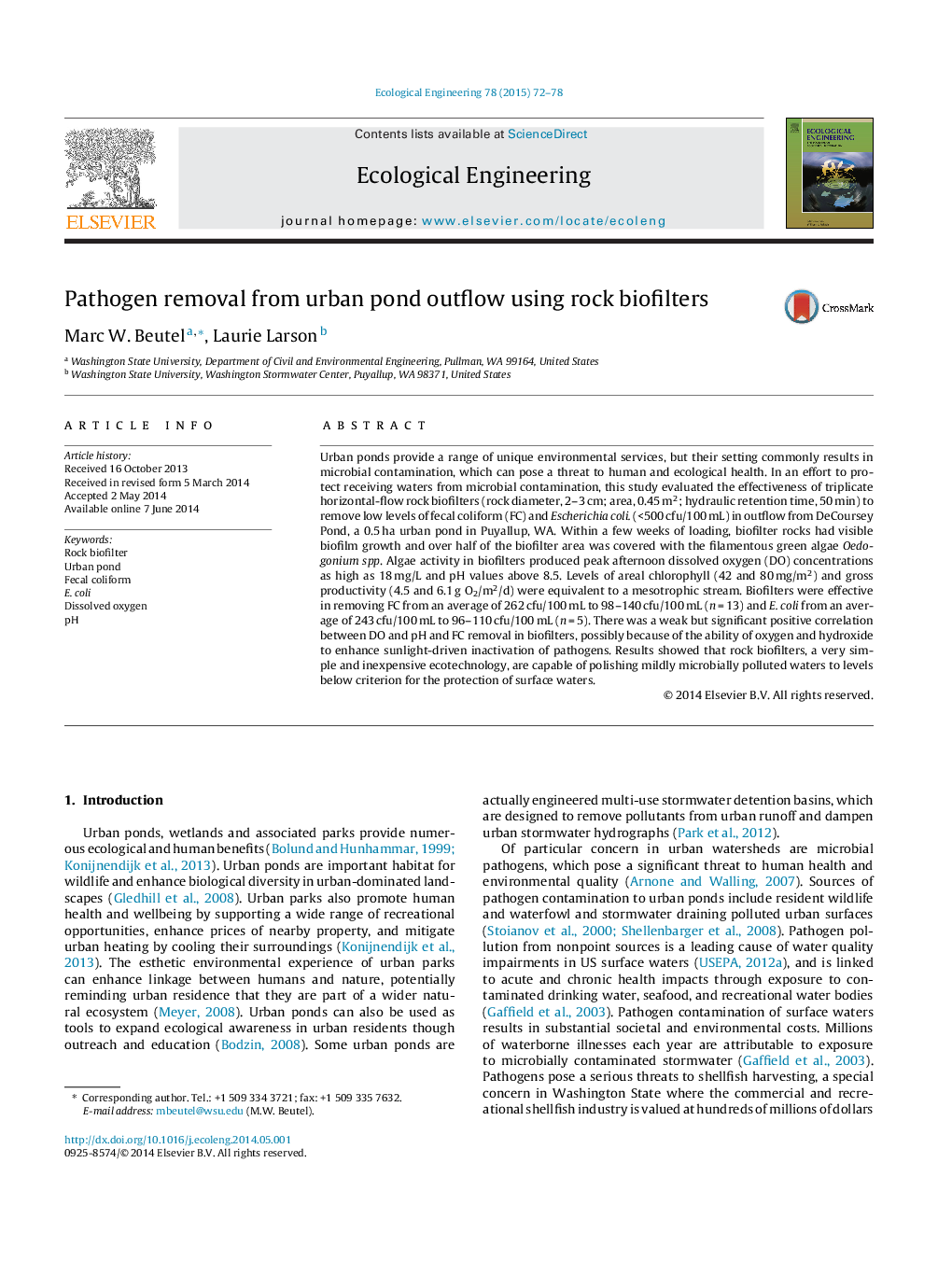| Article ID | Journal | Published Year | Pages | File Type |
|---|---|---|---|---|
| 4389232 | Ecological Engineering | 2015 | 7 Pages |
Urban ponds provide a range of unique environmental services, but their setting commonly results in microbial contamination, which can pose a threat to human and ecological health. In an effort to protect receiving waters from microbial contamination, this study evaluated the effectiveness of triplicate horizontal-flow rock biofilters (rock diameter, 2–3 cm; area, 0.45 m2; hydraulic retention time, 50 min) to remove low levels of fecal coliform (FC) and Escherichia coli. (<500 cfu/100 mL) in outflow from DeCoursey Pond, a 0.5 ha urban pond in Puyallup, WA. Within a few weeks of loading, biofilter rocks had visible biofilm growth and over half of the biofilter area was covered with the filamentous green algae Oedogonium spp. Algae activity in biofilters produced peak afternoon dissolved oxygen (DO) concentrations as high as 18 mg/L and pH values above 8.5. Levels of areal chlorophyll (42 and 80 mg/m2) and gross productivity (4.5 and 6.1 g O2/m2/d) were equivalent to a mesotrophic stream. Biofilters were effective in removing FC from an average of 262 cfu/100 mL to 98–140 cfu/100 mL (n = 13) and E. coli from an average of 243 cfu/100 mL to 96–110 cfu/100 mL (n = 5). There was a weak but significant positive correlation between DO and pH and FC removal in biofilters, possibly because of the ability of oxygen and hydroxide to enhance sunlight-driven inactivation of pathogens. Results showed that rock biofilters, a very simple and inexpensive ecotechnology, are capable of polishing mildly microbially polluted waters to levels below criterion for the protection of surface waters.
